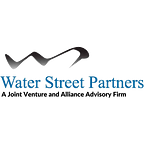Raising the Bar on Non-Operated Joint Venture Influencing
By Joshua Kwicinski
Observations from Water Street’s ninth annual London roundtable on JV portfolio governance.
HOW DO YOU GET senior executives from five of the six largest international oil companies, a slate of mid-tier independent producers, a handful of the world’s largest chemical companies, and one of the world’s largest mining companies — representing a portfolio of over 1,000 non-controlled JVs — into a room together in London? A global conference on sustainable development or a parliamentary inquiry would not be bad guesses. But last month it was for a different occasion: Water Street Partners’ annual roundtable on joint venture portfolio governance.
This year’s agenda was structured around three topics: HSE risk management in non-operated joint ventures, defining and tracking performance as a non-operator, and conducting strategic reviews of non-operated assets.
Yet the road sometimes shifts for the best laid plans. During the day-long discussion, a critical “off-agenda” theme emerged: How to define key focus areas as part of non-operator influence planning.
Water Street has advocated for years that influencing is the only real currency of a non-operator. We have asserted that non-operators need to become great at developing and delivering on annual influence plans, which hinge on defining a limited set of key focus areas. Unfortunately, many around the table lamented that while individual pockets of excellence exist within their companies, getting the vast majority of non-operated JV asset teams to a consistent level of influencing excellence, including a sharp definition of annual key focus areas (KFA), is daunting.
But a few companies are starting to crack the code. What emerged from our roundtable discussion was two types of practices for raising the bar on influencing: One, by improving the way non-operated asset teams define KFAs, and two, by driving KFA delivery into the corporate DNA via management processes, systems, and culture (Exhibit 1).
The purpose of this note is to share those practices with a wider audience.
Exhibit 1: Raising the Bar on Influencing as a Non-Operator
BETTER DEFINING KEY FOCUS AREAS
When asset teams labor in pursuit of overly-general, shifting, or poorly communicated goals, it is extremely hard to drive team focus and accountability and to measure success. Adopting a KFA that sounds like “convincing the Operator to reduce costs” provides neither essential focus for company influencing efforts nor a useful metric of success.
One IOC solved this by setting three requirements for a good KFA: It must be crisp enough to describe in a sentence, contain a measurable goal, and be able to be closed out. They reinforce these requirements by treating key focus area creation as a skill to nurture via mandatory training, and by deploying highly experienced talent to advise non-operated asset teams around the world on how to workshop and define good KFAs. Even with support, it can still take most of a day to define one acceptable KFA.
Focus areas also suffer from reflexively targeting high-dollar items regardless of Operator performance. As one executive told the room, “our asset teams think a good influencing plan targets the most expensive thing the Operator is doing, even if we have nothing to add.” Great asset teams look beyond the total spend in search of the greatest potential positive change from non-operator intervention. To help promote this, at least one oil company requires asset teams to justify proposed KFAs in terms of the value swing from company involvement — believing that there has to be at least a minimum amount at stake to be a true KFA.
Even if asset teams know how to pick and define a good key focus area, many suffer from the urge to take on too much. Focus areas, by definition, require focus. Layered on top of this is the need to allocate limited resources across a non-operated portfolio. The typical oil supermajor now gets 40% of its production from non-operated ventures, steered by only 1% of its workforce. One IOC manages resource allocation — and focus — by mandating no more than five annual KFAs in a major asset, one to two in medium assets, and possibly none in the smallest.
Another major oil company takes a different path to the same destination… To Continue Reading Click Below.
